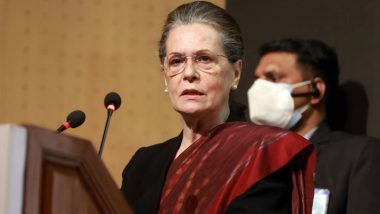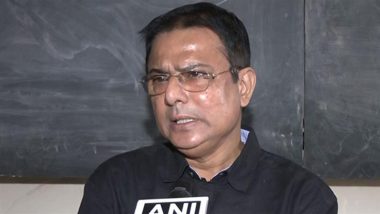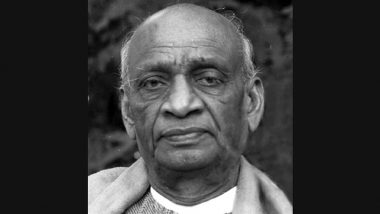Mumbai, July 1: Asia's oldest existing newspaper - "Mumbai Samachar" - where once Mahatma Gandhi, Jawaharlal Nehru and Sardar Vallabhbhai Patel used to drop in for tea and a chat, entered the 200th year of publication on Thursday. It was started as a small bunch of pamphlets on July 1, 1822, by Parsi priest-cum-scholar, Fardunjee Murazban - considered the prioneer of Gujarati journalism - through the first Indian printing press which he launched in 1812.
Initially, Murazban brought out a Gujarati calendar in 1814 before jumping into media journalism in 1822 with the "Mumbai Samachar, 14-pages on three small quarto sheets and a half-sheet supplement in a 10 by 8 inch format. Gujarat Samachar Newspaper Shows 8000 People per 1 Lakh Population Infected by COVID-19 in India; PIB Reveals Truth Behind Fake News.
While the first Asian newspaper was "Hicky's Bengal Gazette" or the Original Calcutta General Advertiser, which came out from 1780, it folded up in 1782. "Samachar Darpan" the country's first non-English newspaper, was published from May 23, 1818 from Hooghly, followed by the "Mumbai Samachar".
"It catered to the thriving business community of the city and provided business-related news, death announcements, and especially shipping time-tables as all trade was conducted through the Bombay port," its present-day owner-Director Hormusji N. Cama, told IANS in a free-wheeling chat.
A weekly till 1832, a bi-weekly till 1855, and then on to a full-fledged daily, the newspaper became a darling of the Gujarati community comprising Parsis, Hindus, Jain, Dawoodi Bohras, Khojas, Memons, et al.
Over the years, while faithfully catering to the business community, "Mumbai Samachar" witnessed history as the Seven Isles known as Bombay transformed into Mumbai, the country's financial-glamour power capital. The Camas, who acquired it in 1933, continued the paper's strongly "nationalistic" editorial policies which endeared itself to the stalwarts of the freedom movement.
"Gandhiji, Nehru and Patel were frequent visitors to my grandfather, Mancherji Cama, to discuss politics over tea," said Cama, who is now managing the newspaper with his two brothers - Mancherji and Merwanji.
With a daily circulation of barely 15,000 copies in the 1930s, now it sells at least 10-times more, and held a total monopoly in the Mumbai Gujarati daily newspaper segment till the 1990s when its first competitor entered Mumbai.
There was also the "Bombay Chronicle" started by another luminary, Sir Pherozeshah Mehta in 1910, but after the Camas took it over, they shut it down in 1959 to concentrate only on "Mumbai Samachar".
Interestingly, after Asia's first bourse, the Bombay Stock Exchange (BSE) started in 1875, the "Mumbai Samachar" would provide well-researched daily reports on the ups-and-downs right till the 1990s which were eagerly lapped up by the investor community.
"With the advent of the Internet-era, we toned down the stock market coverage However, the BSE authorities publicly objected and we reverted to it for a few years But, as things became quicker due to technology, we now offer detailed analyses," Hormusji Cama told IANS.
As in the past, the Camas ensured the newspaper avoided controversies, never targeted people, communities or politicians unnecessarily as it wanted "the readers to feel good in the morning" instead of getting depressed with negative news.
There was a time when the newspaper would carry many top news a day or two later, since, as Cama explained: "We would verify all news, even from the newswire agencies and the tradition continues though selectively."
Surviving for nearly 18 decades without its own set of correspondents, barely in the past 20 years, the newspaper started hiring its own reporters, columnists, expert commentators.
It even appointed the first-ever woman editor for a Gujarati daily, Pinki Dalal, and has a modern bustling newsroom in the 'Red House' - its imposing headquarters near Horniman Circle, which was a landmark well-known as the Red Fort or the White House for old Mumbaikars.
The staffers enjoyed certain privileges like lifetime employment, no retrenchment policy, and modest emoluments compensated by generous festival food coupons, no salary cuts - even if employees remained absent for months or years due to illness, they would continue to get paid, "as it was not their fault and we couldn't just dump them", said Cama.
The current Editor, Nilesh Dave said its glorious traditions continue and entering the 200th year was a landmark occasion of which all are excited.
(The above story first appeared on LatestLY on Jul 01, 2021 07:11 PM IST. For more news and updates on politics, world, sports, entertainment and lifestyle, log on to our website latestly.com).













 Quickly
Quickly




















